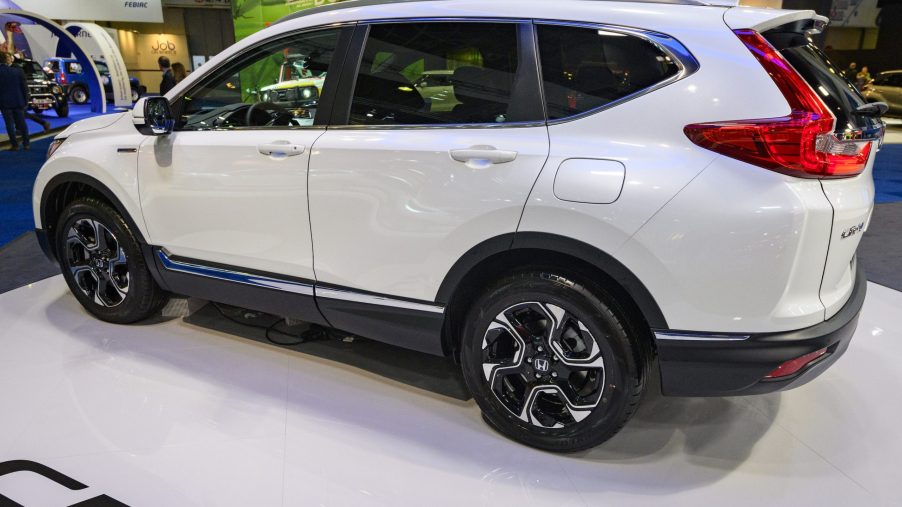
The Honda CR-V Convertible Died Before It Ever Got a Chance to Live
The Honda CR-V, one of the most popular cars in the United States, continues to charm critics and its owners. While Honda continues to sell many new CR-V units each year, there was one model that was surprisingly unsuccessful. According to MotorTrend, Honda created a CR-V convertible concept car in the late ’90s.
The Honda CR-V convertible was originally intended to compete with cars like the Jeep Wrangler and the Toyota RAV4 convertible. However, Honda scrapped the idea before the car even made it to dealerships. What was the Honda CR-V convertible like and why wasn’t it ever available to purchase?
A different kind of Honda CR-V
The Honda CR-V convertible was the collaborative effort of Honda and Valmet, a prominent convertible top manufacturer. With the press of a button, the CR-V’s soft-top would roll down and rest behind the backseats. In addition to developing this advanced technology, Valmet gave this CR-V a special spare tire cover and a roll bar.
Predictably, rolling the top down gave drivers less cargo space, reducing the CR-V’s functionality. The soft-top also came with a zippered window where drivers could access the cargo hold. Unlike conventional two-door convertibles, the CR-V convertible had four doors. Its taillights were also located on the rear panels, rather than near the roof pillars.
What killed the Honda CR-V convertible?
Honda was fairly sure that the CR-V convertible was going to be a success. It operated similarly to the Toyota RAV4 convertible, which was released the previous year. In those days, compact SUVs were not very popular, so automakers thought adding off-roading capability would appeal to some adventurous consumers.
Unfortunately, the RAV4 convertible was not as popular as Toyota had hoped, so it was discontinued after one year. Other off-roading SUVs released at the time just couldn’t keep up with the success of the Jeep Wrangler. The second-gen Wrangler was the first one to have the iconic circular headlights we see on all the latest models.
It also featured an updated coil-spring suspension to give drivers better handling while braving the elements. After seeing the tanking sales of the Toyota RAV4 convertible and similar compact SUVs, Honda ceased plans for the CR-V convertible.
Is there hope for a CR-V convertible now that compact SUVs are more popular? The Land Rover Range Rover Evoque convertible looks odd, but it has achieved decent sales in its lifetime. However, like the CR-V convertible, the Evoque loses a lot of its cargo space with the top down.
What the latest model has to offer
This SUV hardly needs a convertible version to make itself more appealing. It has some of the highest cargo measurements in its class, almost 76 cubic feet when the rear seats are flat. The rear seats are also comfortable and give passengers plenty of room to stretch out.
The Honda CR-V also comes equipped with lots of safety tech. Automatic emergency braking, cruise control, lane-keeping assist, forward-collision warning, and automatic high beams are all standard. Infotainment in the base trim is somewhat sparse, but the next trim is only $2,000 more. It includes a touchscreen instead of the standard digital display, plus satellite radio and smartphone integration.
Under the hood, the Honda CR-V has a 1.5-liter turbo-four that makes 190 hp, paired with a CVT. Critics report that it accelerates quickly and the transmission shifts exactly when it should. It also gets great gas mileage, even with all-wheel drive equipped.
Besides off-roading champions like the Jeep Wrangler (and possibly Ford Bronco), the demand for soft-top compact SUVs simply isn’t there. Compact SUVs are typically purchased by families, so less cargo space would hardly be in their best interests.



